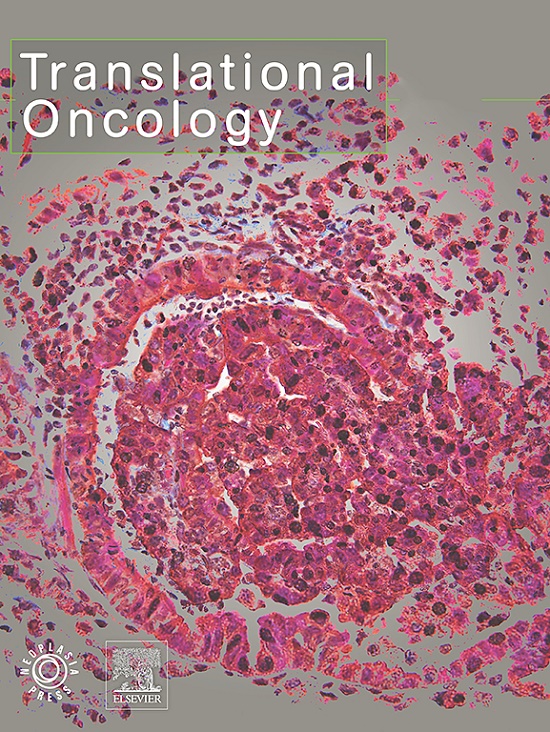circHIPK2通过miR-889-3p/MCTS1/IL-6轴促进喉鳞状细胞癌的恶性进展
IF 5
2区 医学
Q2 Medicine
引用次数: 0
摘要
喉鳞状细胞癌(LSCC)是头颈部常见的恶性肿瘤,预后较差。circRNAs在LSCC中的作用在很大程度上仍然未知。本研究采用实时定量 PCR(qRT-PCR)、Sanger 测序和荧光原位杂交等方法检测了 circHIPK2 在 LSCC 组织、TU686 和 TU212 细胞中的表达、定位和临床意义。通过增殖分析、EdU染色、集落形成试验、伤口愈合试验和Transwell试验探讨了circHIPK2在LSCC中的功能。利用荧光素酶测定、Western 印迹和 qRT-PCR 研究了 circHIPK2、miR-889-3p 和 MCTS1 的调控机制。我们发现,LSCC组织和细胞中circHIPK2的高表达与LSCC的恶性进展和不良预后密切相关。敲除circHIPK2可抑制体外LSCC细胞的增殖和迁移。机理研究表明,circHIPK2与miR-889-3p竞争性结合,提高了MCTS1的水平,促进了IL-6的分泌,最终加速了LSCC的恶性进展。总之,circHIPK2、miR-889-3p、MCTS1和IL-6是LSCC恶性进展的调控轴。本文章由计算机程序翻译,如有差异,请以英文原文为准。
circHIPK2 promotes malignant progression of laryngeal squamous cell carcinoma through the miR-889-3p/MCTS1/IL-6 axis
Laryngeal squamous cell carcinoma (LSCC) is a common malignant tumor of the head and neck with a poor prognosis. The role of circRNAs in LSCC remains largely unknown. In this study, quantitative real-time PCR (qRT-PCR), Sanger sequencing and fluorescence in situ hybridization were undertaken to detect the expression, localization, and clinical significance of circHIPK2 in LSCC tissues and TU686 and TU212 cells. The functions of circHIPK2 in LSCC were explored through proliferation analysis, EdU staining, colony formation assay, wound healing assay, and Transwell assay. The regulatory mechanisms underpinning circHIPK2, miR-889–3p, and MCTS1 were investigated using luciferase assay, Western blotting, and qRT-PCR. We found that LSCC tissues and cells demonstrated high expression of circHIPK2 that was closely associated with the malignant progression and poor prognosis of LSCC. Knockdown of circHIPK2 inhibited the proliferation and migration of LSCC cells in vitro. Mechanistic studies showed that circHIPK2 competitively bound to miR-889–3p, elevated MCTS1 level, promoted IL-6 secretion, and ultimately accelerated the malignant progression of LSCC. In conclusion, an axis involving circHIPK2, miR-889–3p, MCTS1 and IL-6 regulates the malignant progression of LSCC. circHIPK2 expression may serve as a novel diagnostic and prognostic biomarker for LSCC.
求助全文
通过发布文献求助,成功后即可免费获取论文全文。
去求助
来源期刊

Translational Oncology
ONCOLOGY-
CiteScore
8.40
自引率
2.00%
发文量
314
审稿时长
54 days
期刊介绍:
Translational Oncology publishes the results of novel research investigations which bridge the laboratory and clinical settings including risk assessment, cellular and molecular characterization, prevention, detection, diagnosis and treatment of human cancers with the overall goal of improving the clinical care of oncology patients. Translational Oncology will publish laboratory studies of novel therapeutic interventions as well as clinical trials which evaluate new treatment paradigms for cancer. Peer reviewed manuscript types include Original Reports, Reviews and Editorials.
 求助内容:
求助内容: 应助结果提醒方式:
应助结果提醒方式:


